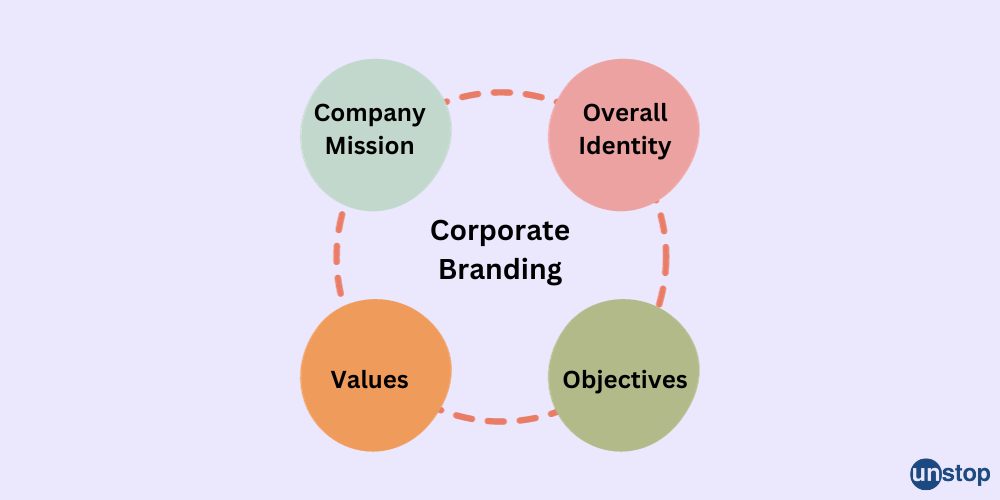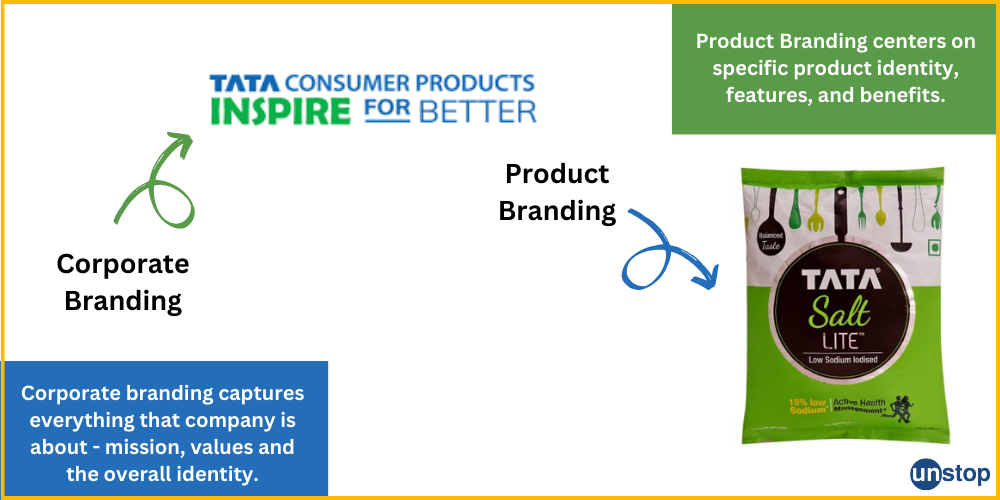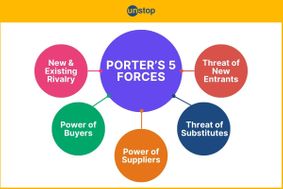- What is a Brand & Why is it Important?
- Elements of a Brand: Mission, Vision, and Values
- Types of Brands and their Significance
- Branding Strategies: Private, Multiproduct, and Mixed
- Brand Image and Its Impact on Perception
- Building a Strong Brand
- Frequently Asked Questions
- Understanding Brand Equity: Definition and Elements
- Importance of Brand Equity
- Evolution Of Brand Equity In The Digital Age
- Brand Equity in the Global Marketplace
- Measuring Brand Equity: Metrics & Methods
- Managing Brand Equity: Salient Elements
- Building & Managing Brand Equity: Best Practices
- The Future of Brand Equity
- Conclusion
- Frequently Asked Questions
- What is Brand Management?
- Importance of Brand Management
- Benefits of Effective Brand Management
- Principles of Brand Management
- Strategies for Successful Brand Management
- Brand Management vs. Marketing
- Conclusion: The Power of Brand Management
- Frequently Asked Questions
- Importance of Brand Image in Marketing
- Key Elements of a Successful Brand Image
- Brand Image vs. Brand Identity: Key Differences
- Measuring and Monitoring Brand Image
- Strategies for Maintaining and Enhancing Brand Image
- The Power of a Positive Brand Image
- FAQs
- What is Brand Awareness and its Importance?
- Benefits of Brand Awareness
- Brand Awareness Strategy: Some Tried & Tested Methods
- Some Creative Ways to Boost Brand Awareness
- Significance of Brand Awareness
- Conclusion
- Frequently Asked Questions
- Porter's 5 Forces Model: What Is It?
- Porter's 5 Forces Model: How To Use It?
- Common Barriers to Entry
- Evaluating Suppliers' Negotiating Power
- Understanding the Bargaining Power of Buyers
- Analyzing Threat of Substitute Products or Services
- Rivalry amongst Competitors (Old & New)
- Drawbacks of the Five Forces Model
- Conclusion
- Frequently Asked Questions
- How Well Do You Know Porter’s 5 Forces? Take A Quiz!
- What is Buying Motive?
- Types Of Buying Motives
- Importance Of Buying Motives
- Six Universal Buying Motives
- Identifying Buyer's Motives
- Utilizing Buying Motives In Sales
- Challenges In Interpreting Buying Motives
- Frequently Asked Questions (FAQs)
- 💸 Think You Know Buying Motives? Take A Quiz!
- Understanding the Elements and Importance of Brand Equity
- What are brand equity models?
- Comparing Keller's and Aaker's brand equity models
- Real-world examples of brand equity in action
- Strategies for building strong brand equity
- Key takeaways on brand equity models
- FAQs
- Mastered Brand Equity Models? Prove It!
- What Is Brand Positioning?
- The Importance of Brand Positioning for Businesses
- Creating A Brand Positioning Strategy: Step-By-Step Process
- Measuring the Success of Your Brand's Positioning
- Examples of Strong Brand Positioning in the Market
- Types of Brand Positioning Strategies
- Social Media Engagement: A Key Positioning Strategy
- What Makes a Good Brand Positioning Strategy?
- Conclusion
- Frequently Asked Questions
- Quick Quiz to Test Your Knowledge of Brand Positioning!
- Brand Personality: Definition & Importance
- How to Define Your Brand Personality?
- Choosing Your Brand Personality Attributes
- Dimensions of Brand Personality Framework: The Aaker Model
- Incorporating Core Values Into Your Brand Personality
- Examples of Brand Personalities in Action
- Conclusion
- Frequently Asked Questions
- Brand Personality Quiz– Let's Go!
- What is Brand Identity?
- What are the Key Components of Brand Identity?
- Importance & Benefits Of Brand Identity
- Importance of Unique Visual Elements in Brand Identity
- Communication Style and Tone of Voice in Brand Identity
- Steps on How to Create a Brand Identity
- Brand Identity Example- Coca-Cola
- Examples of Strong Brand Identities in Different Industries
- Consistency in Online and Offline Branding
- Conclusion
- Frequently Asked Questions (FAQs)
- Think You Know Brand Identity? Take A Quiz!
- Brand Identity Prism: Understanding The Concept
- Role Of Culture In Brand Identity Prism
- Brand Identity Prism: Visualizing The Sender & Receiver
- Benefits Of Brand Identity Prism
- Examples Of Brand Identity Prism In Action
- Brand Identity Prism: Key Takeaways
- Frequently Asked Questions
- Take This Brand Identity Prism Quiz!
- What is Market Segmentation?
- Importance of Market Segmentation
- The Market Segmentation Process
- Types of Market Segmentation
- Common Challenges in Implementing Market Segmentation
- Overcoming Challenges in Market Segmentation
- Conclusion: Understanding The Impact
- Frequently Asked Questions (FAQs)
- Test Your Market Segmentation Knowledge– Take This Quiz!
- What is Brand Loyalty? Meaning & Significance
- Characteristics of Brand Loyalty
- Measuring and Tracking Brand Loyalty
- Importance of Brand Loyalty for Companies
- Brand Loyalty Examples and Types
- Strategies for Building Brand Loyalty
- Differentiating Brand Loyalty from Customer Loyalty
- Conclusion: The Power and Importance of Brand Loyalty
- Frequently Asked Questions
- Think You Know Brand Loyalty? Take A Quiz!
- Brand Extension Meaning
- Brand Extension Types
- Understanding Brand Line Extension vs. Brand Extension
- The Impact and Potential of Brand Extension
- Successful and Unsuccessful Brand Extensions Examples
- Summing Up
- Frequently Asked Questions
- Quiz– Test Your Brand Extension!
- Step-by-step guide on how to build a brand from scratch
- Benefits of a Strong Brand
- Examining Successful Brand-Building Examples
- Summing up
- Frequently Asked Questions
- Know How to Build a Brand? Prove it With This Quiz!
- What is Marketing Mix?
- Understanding the 4 Ps of Marketing
- The Seven Ps of Marketing
- Implementing the Marketing Mix in Business
- Amul: Example of Successful Marketing Mix Implementation
- Exploring Alternative Marketing Mix Models
- Conclusion
- Frequently Asked Questions (FAQs)
- Mastered the Marketing Mix! Test Your Knowledge Now
- Defining Brand Value and its Importance
- Measuring Brand Value
- Factors that Make a Brand Valuable to Customers
- Examples of Brand Value from Real World
- Brand Value Versus Brand Equity
- The Impact of Brand Value on Business Marketing Strategies
- Conclusion: The Significance of Brand Value
- Frequently Asked Questions
- How Much Do You Know About Brand Value? Take This Quiz!
- Definition Of Co-Branding
- Different Types Of Co-Branding
- Benefits & Advantages Of Co-Branding
- Strategies For Successful Co-Branding Partnerships
- Notable Successful Co-Branding Examples
- Factors Influencing Co-Branding Success
- Frequently Asked Questions (FAQs)
- Co-Branding Quiz: Test Your Expertise!
- What is a Target Market?
- Importance of Target Market: Why Do We Need It?
- Types of Target Market
- The Target Marketing Process
- Primary Research for Target Markets
- Leveraging Target Market Segmentation for Sales
- Conclusion
- Frequently Asked Questions (FAQs)
- 🎯 Do You Know Your Target Market? Take the Quiz!
- Importance of Understanding Consumer Decisions
- Traditional vs Contemporary Consumer Behaviour Model
- Traditional Models of Consumer Behaviour
- Learning Model of Consumer Behaviour
- Psychoanalytical Model of Consumer Behaviour
- Sociological Model of Consumer Behaviour
- Economic Model of Consumer Behaviour
- Contemporary Models of Consumer Behaviour
- EKB Model of Consumer Behaviour
- Black Box Model of Consumer Behaviour (Stimulus-Response Consumer Behaviour Model)
- Howard Sheth Model of Consumer Behaviour
- Hawkins-Stern Model of Consumer Behavior
- Webster and Wind Model
- Nicosia Model of Consumer Behaviour
- How to Select a Consumer Behaviour Model?
- Final Remarks
- Frequently Asked Questions
- 🛍️ Consumer Behavior Models Quiz: Test Your Knowledge!
- What is a Consumer?: Definition & Role
- The Evolution of the Term "Consumer"
- Consumer Behavior
- Different Types of Consumers
- Consumers' Motivation for Buying
- Relationship Between Businesses and Consumers
- Consumer Rights in India
- Current Challenges for Consumers
- The Future of Consumers in a Digital Age
- Final Remarks
- Frequently Asked Questions (FAQs)
- 🛍️ Consumer or Customer? Test Your Knowledge!
- What is a Market Structure?
- Types of Market Structures
- How Markets Work
- Significance of Different Types of Market
- Summing Up
- Frequently Asked Questions
- 🏪 Market Structures 101: Take the Quiz!
- Understanding the Concept of Corporate Branding
- Importance and Advantages of Corporate Branding
- Researching Competitor Brands
- Implementing Effective Corporate Branding Strategies
- Successful Corporate Branding Examples: Alphabet, Walmart & SAP
- Impact and Success of Corporate Branding
- Conclusion
- Frequently Asked Questions
- 🏢 Corporate Branding Quiz: Test Your Knowledge!
- Perception Management: Meaning & Importance
- Process Of Perception Management
- Influencing & Shaping Perceptions
- Strategies For Perception Management
- Technology In Perception Management
- Branding & Control In Perception Management
- Customer Feedback For Perception Improvement
- Frequently Asked Questions (FAQs)
- 🧠 Perception Management Quiz: How Well Do You Know It?
- Definition & Importance Of Target Marketing
- Advantages & Disadvantages Of Target Marketing Strategies
- Examples Of Target Marketing Strategies
- Creating An Effective Target Market Strategy
- Segmentation: Key To Targeted Marketing
- Utilizing Social Media For Targeted Marketing
- Frequently Asked Questions ( FAQs)
- 🎯 Target Marketing Strategies Quiz: Test Your Knowledge!
- Definition and Significance of Brand Association
- Brand Association Types
- Successful Brand Association Examples
- Strategies for Building Strong Brand Associations
- Overcoming Negative Brand Associations
- Conclusion: Harnessing the Power of Brand Association
- Frequently Asked Questions
- 🔗 Brand Association Quiz: Check Your Brand Knowledge!
- What is Product Positioning?
- Importance Of Product Positioning in Marketing
- Difference between Product Positioning and Brand Positioning
- Types Of Product Positioning
- Main Components Of Product Positioning
- Successful Product Positioning Strategies
- Understanding the Product Positioning Process
- Examples Of Effective Product Positioning
- Conclusion
- Frequently Asked Questions (FAQs)
- 🔥 Product Positioning Quiz: Test Your Marketing Smarts!
- How do we define niche market?
- Strategies To Find Your Niche Market
- 7 Examples Of Niche Markets
- Benefits Of Targeting A Niche Market
- Testing Your Product Or Service For Niche Market
- Conclusion
- Niche Market: Frequently Asked Questions (FAQs)
- 🎯 Niche Market Quiz: Test Your Knowledge!
- Importance Of STP In Marketing
- Understanding STP in Marketing Step-by-Step
- Process Of Implementing STP In Marketing
- Examples Of Successful STP Strategies
- Conducting An STP Marketing Analysis
- Choosing Your Marketing Mix
- Strategies For Targeting the Right Audience
- Conclusion
- Frequently Asked Questions (FAQs)
- 🔍 STP in Marketing Quiz: Test Your Knowledge!
- Sales and Marketing: Understanding the Core Concepts
- Key Differences Between Sales and Marketing
- Types of Marketing
- Types of Sales
- Power of Synergy: Sales and Marketing Alignment (Smarketing)
- Frequently Asked Questions (FAQs)
- Definition Of Customer Satisfaction
- Importance Of Customer Satisfaction
- Strategies For Effective Customer Satisfaction
- Measuring Customer Satisfaction
- Customer Satisfaction in Marketing & Sales
- Frequently Asked Questions (FAQs)
- 🎯 Customer Satisfaction Quiz: Are You an Expert?
- Customer Delight Meaning
- Benefits of Customer Delight
- Customer Satisfaction Vs Customer Delight
- Strategies With Customer Delight Examples
- How to Measuring the Impact Of Customer Delight?
- Customer Delight Examples - 3 instances by big brands that won hearts
- Common Mistakes In Customer Delight
- Conclusion
- Frequently Asked Questions (FAQs)
- 🌟 Customer Delight Quiz: Can You Ace It?
- What is a Marketing Plan?
- Types Of Marketing Plan
- What are the Key Components of a Marketing Plan?
- Steps for Effective Marketing Planning
- Crafting Your SEO Content Strategy
- Budgeting & Resource Allocation
- Identifying & Analyzing Competition
- Measuring Success with KPIs
- Importance of Flexibility in Marketing Planning
- Challenges of Marketing Plan
- Marketing Plan vs Business Plan
- Conclusion
- Frequently Asked Questions (FAQs)
- 📊 Marketing Planning Quiz: Test Your Knowledge!
- What is Marketing Control?
- Types of Marketing Control (with Examples)
- Annual Plan Marketing Control
- Profitability Marketing Control
- Efficiency Marketing Control
- Strategic Marketing Control
- Process of Marketing Control
- Techniques Used in Marketing Control
- Frequently Asked Questions
Corporate Branding: Meaning| Advantages| Effective Strategies

Corporate branding is more than just a logo or a catchy slogan. It is the essence of a company's identity, encompassing its objectives, mission, values and overall image. Establishing a strong corporate brand is crucial in today's competitive business landscape, as it sets the company apart from the competition, builds customer trust, and attracts top talent.
In this article, we will discuss the importance of creating a robust corporate branding and how it influences various business aspects. So, let's uncover the power of corporate branding.
Understanding the Concept of Corporate Branding
Elements that Contribute to a Corporate Brand
Corporate branding consists of various elements that contribute to a corporate entity's overall perception and identity. These include:
- Visual identity: This includes the company's logo, color palette, typography, and other visual aspects that create a recognizable brand image.
- Mission and values: A strong corporate brand reflects the company's mission and core values, which shape its culture and guide its actions.
- Communication style: The way a company communicates with its audience through marketing materials, advertising campaigns, and customer interactions also plays a significant role in building its corporate brand.

How Corporate Branding Differs from Product Branding
Corporate branding and product branding are two different things. Product branding focuses on individual products or services. On the other hand, corporate branding centers around the overarching identity of the entire company. Unlike product branding, which may change as new products are introduced or phased out, corporate branding remains relatively consistent over time.
Corporate branding aims to establish trust, credibility, and loyalty towards the company as a whole rather than just one specific product or service. It helps create an emotional connection with customers by conveying the company's objectives and purpose.

The Role of Perception in Corporate Branding
Perception is key. How customers perceive a company can greatly impact its success. Positive perceptions can lead to increased customer loyalty, while negative perceptions can damage reputation and hinder growth.
To shape perception effectively, companies must consistently deliver on their promises and maintain transparency in their operations. By aligning their actions with their stated mission and values, companies can build trust among customers and stakeholders.
Importance and Advantages of Corporate Branding
Corporate branding plays a crucial role in the success of a company. It goes beyond just having a logo or a catchy slogan. Let's explore why corporate branding is so important and the advantages it brings.
Enhances customer loyalty and trust
A strong corporate brand creates a sense of trust among customers. When people recognize and connect with a brand, they are more likely to remain loyal to it. Through consistent messaging and delivering on promises, companies can build lasting relationships with their customers. Here is how it works:
- Consistent branding builds familiarity and recognition.
- Trust leads to repeat purchases and customer loyalty.
- Positive experiences strengthen the bond between customers and brands.
Differentiates a company from its competitors
In today's competitive market, standing out from the crowd is essential. Corporate branding helps companies differentiate themselves from their competitors by showcasing what makes them unique.
- Strong branding highlights a company's values, mission, and personality.
- Unique positioning sets brands apart in saturated markets. (Also Read: What is Brand Positioning?)
- Differentiation attracts customers who resonate with the brand's identity.
Increases perceived value and marketability
Effective corporate branding enhances the perceived value of products or services offered by a company. It gives an impression of quality that can justify higher prices or create demand for premium offerings.
- A well-established brand commands higher prices due to perceived value.
- Strong branding increases marketability by attracting new customers.
- Positive brand reputation leads to increased sales opportunities.
Researching Competitor Brands
To create a strong corporate brand, it's essential to research competitor brands and study successful examples in the industry. This will provide inspiration and insights into effective branding strategies that can be applied to your own business.
Analyzing competitor brands for inspiration
By analyzing competitor brands, you can gain valuable insights into what works and what doesn't in your market. Take note of their visual identity, messaging, and positioning. Look at how they engage with their target audience and the emotions they evoke through their branding. This analysis will help you understand the competitive landscape and identify opportunities to differentiate yourself.
Studying successful corporate branding case studies
Case studies of successful corporate branding can offer valuable lessons and inspiration for your own brand strategy. Look for companies that have achieved significant success in your industry or niche. Study how they have effectively communicated their values, built customer loyalty, and established a strong brand presence. By understanding their approach, you can adapt similar strategies to suit your own business goals.
Identifying key strategies used by industry leaders
Industry leaders often set the standard. Study companies like Google, Apple, or Nike to uncover the key strategies that have contributed to their success. Pay attention to how they have positioned themselves as thought leaders in their respective industries and how they consistently deliver on their brand promise.
When researching competitor brands and successful examples, remember not to copy or imitate them directly. Instead, use them as a source of inspiration to develop your unique brand identity that resonates with your target audience.
Implementing Effective Corporate Branding Strategies
To successfully implement effective corporate branding strategies, there are several key factors to consider. These include defining brand values, mission, and vision; developing consistent messaging across all platforms; and utilizing storytelling techniques to engage customers.
Defining Brand Values, Mission, and Vision
One crucial aspect of corporate branding strategy is clearly defining the brand's values, mission, and vision. This involves identifying what the company stands for, its purpose in the market, and its long-term goals. By establishing these fundamental elements, companies can create a strong foundation for their branding efforts.
Pros:
- Helps align marketing campaigns with overall business objectives.
- Provides a clear direction for employees to follow.
- Differentiates the brand from competitors.
Cons:
- Requires careful consideration and brainstorming sessions.
- May involve input from multiple management teams.
Developing Consistent Messaging Across All Platforms
Consistency is key. It's essential to ensure that the brand messaging remains consistent across all marketing materials and channels. This includes maintaining a unified tone of voice, design, color scheme, and unique selling proposition (USP).
Pros:
- Builds trust and recognition among target audience.
- Creates a strong position in the market.
Cons:
- Requires coordination across various departments.
- Can be challenging to maintain consistency across different distribution channels.
Utilizing Storytelling Techniques to Engage Customers
Storytelling has become an increasingly powerful tool in marketing. Incorporating storytelling techniques into corporate branding can help captivate customers' attention and forge an emotional connection with the brand. By crafting narratives that resonate with their target audience's values and aspirations, companies can leave a lasting impression.
Pros:
- Engages customers on an emotional level.
- Enhances brand affinity and loyalty.
Cons:
- Requires creativity and strategic planning.
- Might not resonate with every target audience.
Successful Corporate Branding Examples: Alphabet, Walmart & SAP
Alphabet
Alphabet, the parent company of Google, is a prime example of successful corporate branding. They have built their brand around innovation and technological advancements. By constantly pushing the boundaries of what is possible, Alphabet has positioned itself as a leader in the tech industry.
Alphabet's corporate branding is centered around its commitment to technological advancements and pushing the boundaries of what is possible. This branding strategy has helped Alphabet to differentiate itself from its competitors and build a strong reputation as a trusted and innovative brand. Through its corporate branding efforts, Alphabet has effectively communicated its values and vision to its target audience, establishing itself as a leading player in the tech industry.
Walmart
Walmart is another company that has mastered the art of corporate branding. Their focus on affordability and convenience has resonated with consumers for decades. With their low prices and wide range of products, Walmart has become synonymous with value and accessibility. The key factor that sets Walmart apart from its competitors is its ability to offer a vast array of products at incredibly low prices. This unique selling proposition has positioned Walmart as the go-to destination for customers seeking unbeatable value for their hard-earned money.
Furthermore, Walmart's extensive product range caters to diverse customer needs, making it a one-stop-shop for all their shopping requirements. Whether it's groceries, electronics, clothing, household items, or even automotive supplies, Walmart has it all under one roof. This exceptional accessibility has further solidified Walmart's reputation as a brand that prioritizes customer convenience above all else. It is this combination of affordability and accessibility that has made Walmart synonymous with value in the minds of millions of consumers worldwide.
SAP
SAP, a multinational software corporation headquartered in Germany, has made a name for itself in the technology industry due to its unwavering dedication to delivering top-notch enterprise software solutions. With over 50 years of experience, SAP has become a trusted partner for businesses worldwide seeking to optimize their operations and enhance overall efficiency. The company's commitment to innovation and customer satisfaction has been instrumental in solidifying its position as a leader in the competitive software market.
One of the key factors contributing to SAP's success is its strong corporate branding strategy. A well-defined corporate brand serves as the foundation for establishing credibility and trust among customers and stakeholders. SAP's corporate branding encompasses various elements, including its logo, visual identity, messaging, and overall brand personality. These components work together harmoniously to create a cohesive brand image that resonates with the target audience.
TATA
TATA is a multinational conglomerate company based in India, with a diverse range of businesses including Tata Motors, Tata Steel, Tata Consultancy Services, and Tata Power, among others. The company has implemented a successful corporate branding strategy that has helped it establish a strong and trusted brand identity globally.
One key aspect of TATA's corporate branding strategy is its commitment to corporate social responsibility (CSR). The company has been actively involved in various social and environmental initiatives, which has helped it build a positive brand image and gain the trust of its stakeholders. TATA's CSR efforts include initiatives in education, healthcare, rural development, and environmental sustainability.
Another important element of TATA's branding strategy is its focus on innovation and technological advancements. The company has consistently invested in research and development to stay at the forefront of technological advancements in its various industries. This commitment to innovation has not only helped TATA stay competitive but has also contributed to its brand reputation as a forward-thinking and innovative company.
TATA also emphasizes its commitment to quality and reliability in its branding strategy. The company has a strong emphasis on delivering high-quality products and services to its customers, which has helped it build a reputation for reliability and trustworthiness. This focus on quality has been a key driver of customer loyalty and has helped TATA differentiate itself from its competitors.
Furthermore, TATA's corporate branding strategy includes a strong focus on employee engagement and development. The company recognizes the importance of its employees in delivering its brand promise and therefore invests in their training and development. This not only helps TATA attract and retain top talent but also ensures that its employees are aligned with its brand values and deliver a consistent brand experience to customers.
The above successful examples highlight different approaches to corporate branding. While Alphabet emphasizes innovation, Walmart focuses on affordability, and SAP prioritizes enterprise solutions. Each company has identified its unique selling points and effectively communicated them to their target audience. By studying these examples, businesses can learn valuable lessons about crafting their own corporate branding strategies.
Impact and Success of Corporate Branding
Corporate branding plays a pivotal role in the success of a company. It goes beyond just having a recognizable logo or catchy slogan. Let's explore some of the key benefits that strong corporate branding can bring to a business.
Increased Customer Loyalty Leading to Repeat Business
A strong brand creates an emotional connection with customers, fostering trust and loyalty. When customers have positive experiences with a brand, they are more likely to become repeat buyers. They develop a sense of familiarity and trust, making them choose your products or services over competitors'. This repeat business not only boosts revenue but also helps in building a solid customer base.
Greater Employee Satisfaction and Retention Rates
A well-established corporate brand not only attracts customers but also appeals to potential employees. A strong brand reputation makes the company an attractive place to work, leading to higher employee satisfaction levels. Employees feel proud to be associated with the brand, resulting in improved morale and increased productivity. Moreover, when employees are happy, they are more likely to stay with the company for longer periods, reducing turnover rates.
Higher Market Share Due to Strong Brand Recognition
A strong corporate brand stands out from the competition by creating a unique identity that resonates with consumers. It helps in differentiating your products or services from others in the market. When customers recognize and trust your brand, they are more likely to choose it over alternatives. This leads to an increase in market share as your brand gains prominence among consumers.
In today's digital age, social media platforms and other forms of media play significant roles in shaping public perception about brands. Positive online reviews and word-of-mouth recommendations can greatly influence consumer decisions. By consistently delivering high-quality products or services backed by excellent customer experiences, you can build a reputable corporate brand that captures attention both online and offline.
Conclusion
By implementing effective corporate branding strategies, companies can differentiate themselves from competitors, build trust with their audience, and ultimately drive long-term success.
If you want to set up a strong corporate branding for your company, start by researching your competitor brands. Successful examples can help you to identify key insights that can steamline your branding efforts. Develop a robust corporate branding strategy that aligns with your company's values, mission, and target audience. Remember, consistency is key in building a strong brand identity across all touchpoints. Embrace authenticity, cultivate trust, and watch as your brand becomes a force to be reckoned with in the market.
Frequently Asked Questions
How long does it take for corporate branding strategies to show results?
The timeline for seeing results from corporate branding strategies can vary depending on various factors such as industry, target audience, competition, and the effectiveness of the strategies implemented. While some immediate benefits may be evident in terms of increased brand awareness or engagement, it often takes consistent effort over an extended period before substantial impact is seen.
Is it necessary for small businesses to invest in corporate branding?
Absolutely! Corporate branding is not just limited to large corporations; it is equally important for small businesses. Building a strong brand identity helps small businesses stand out from competitors, establish credibility among customers, attract new clients or customers, foster loyalty among existing ones, and create a solid foundation for future growth.
How can I measure the success of my corporate branding efforts?
Measuring the success of corporate branding efforts involves tracking specific metrics that align with your branding goals. These may include brand awareness, customer perception and sentiment, website traffic, social media engagement, lead generation, sales conversions, and customer retention rates. By regularly monitoring these metrics and analyzing the data, you can gain valuable insights into the effectiveness of your branding strategies and make informed decisions for continuous improvement.
Can corporate branding help in attracting top talent?
A strong corporate brand not only appeals to customers but also attracts top talent. When a company has a positive reputation and is known for its values, culture, and employee satisfaction, it becomes an attractive place to work. Talented individuals are more likely to be drawn to companies that align with their own values and offer opportunities for growth and development.
🏢 Corporate Branding Quiz: Test Your Knowledge!
Suggested Reads:
Alekhya Chakrabarty is a father, a doodler, a trivia buff, a sports fanatic and a lifelong student of marketing. Alekhya is the VP of Marketing & Growth at Unstop, the engagement and hiring platform which connects students and graduates with opportunities. He has over a decade and a half of experience in driving revenue and building brands with the likes of Nestle, HUL and ITC. He is an alumnus of IMT Ghaziabad and in his last stint he was leading the marketing function at Sunstone, a higher education startup. Alekhya has been recognised as a ‘Top Voice’ on LinkedIn for Digital Marketing & Brand Management. He runs a marketing podcast titled East India Marketing Company to drive conversations around growth, content, culture and commerce.
Login to continue reading
And access exclusive content, personalized recommendations, and career-boosting opportunities.
Subscribe
to our newsletter
















Comments
Add comment